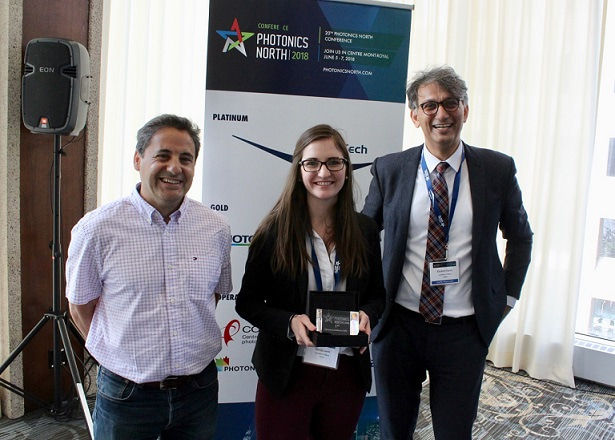Interactions: Amanda Lewis
Published in Physics

1. Can you briefly explain the results for which you got the award?
 Regular solar panels only absorb light that is incident on their front face. In contrast to those monofacial panels, bifacial solar panels can absorb light illuminating both the front and rear faces. Our group at the SUNLAB has developed modelling software to estimate the electrical energy yield of bifacial solar panels based on solar resource and environmental data,
Regular solar panels only absorb light that is incident on their front face. In contrast to those monofacial panels, bifacial solar panels can absorb light illuminating both the front and rear faces. Our group at the SUNLAB has developed modelling software to estimate the electrical energy yield of bifacial solar panels based on solar resource and environmental data,
with a focus on their potential impact in Canada’s North. We predicted an energy yield increase of over 24 percent using bifacial solar panels over monofacial panels for northern locations in Canada.
2. What do you hope will be the impact of your research?
I hope to demonstrate that bifacial solar panels are a viable technology for Canada that performs in many environments – not only in hot, sunny locations. In fact, as these results show, the advantages of bifacial technology are even greater in Northern regions where solar power is conventionally assumed to be not as effective. This can allow remote communities to replace existing diesel-based power generation; many remote communities require diesel fuel to be flown in to generate power, which is inefficient, expensive, and polluting. Green alternatives like bifacial solar panels present a good opportunity to help achieve climate change objectives by reducing emissions.
3. What made you want to be a physicist in the first place?
I chose to pursue research in order to make a positive impact, socially and environmentally. The work that the SUNLAB does with next-generation solar technology is really exciting, and I believe that breakthroughs in solar energy research will help to reduce our society’s reliance on fossil fuels. I also love an intellectual challenge, which is easily found in the work that we do.
4. If you weren’t a physicist, what would you like to be (and why)?
It would be really interesting to work as a scientific educator or reporter, learning about new developments in a variety of fields and making them accessible to the public. I’m a big fan of podcasts, and I envy the work that the Stuff You Should Know hosts and the Economist’s Babbage get to do.
5. What is your non-scientifically accurate guilty pleasure (could be film/series/book)?
I have a soft spot for Joss Whedon’s Firefly. It’s a really fun space/western story with lots of implausible technology, but the characters are charming.
6. What would be your physics superpower?
I would love to have the power to teleport through time and space, like Hiro Nakamura or Doctor Who. I would want to visit all the most interesting times and places in history.


Please sign in or register for FREE
If you are a registered user on Research Communities by Springer Nature, please sign in